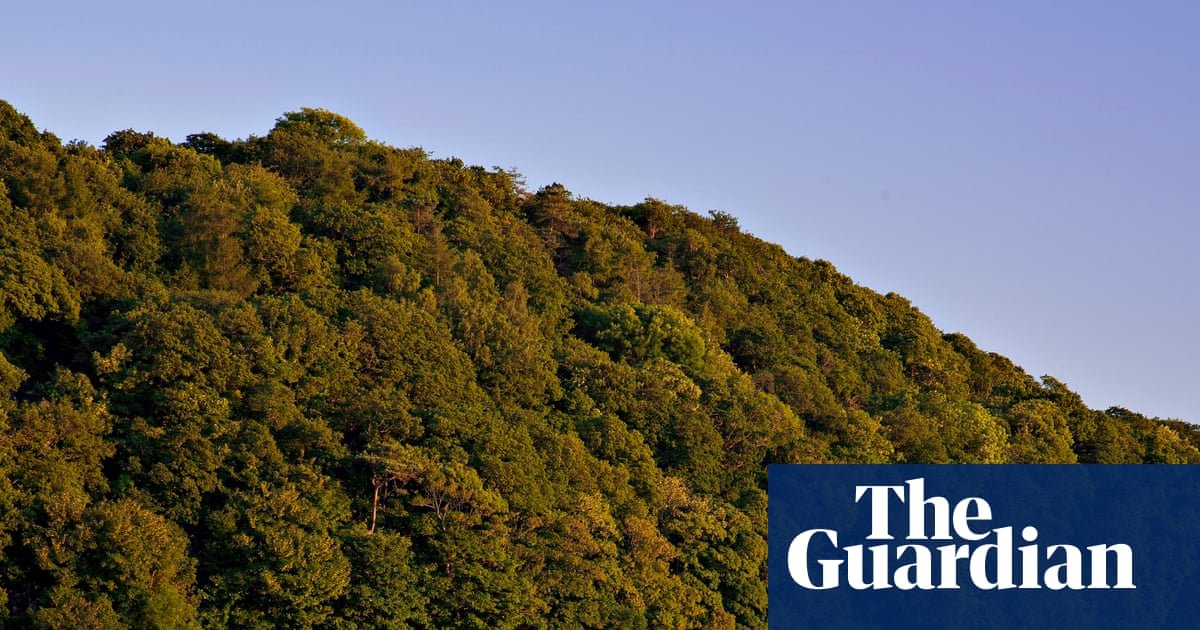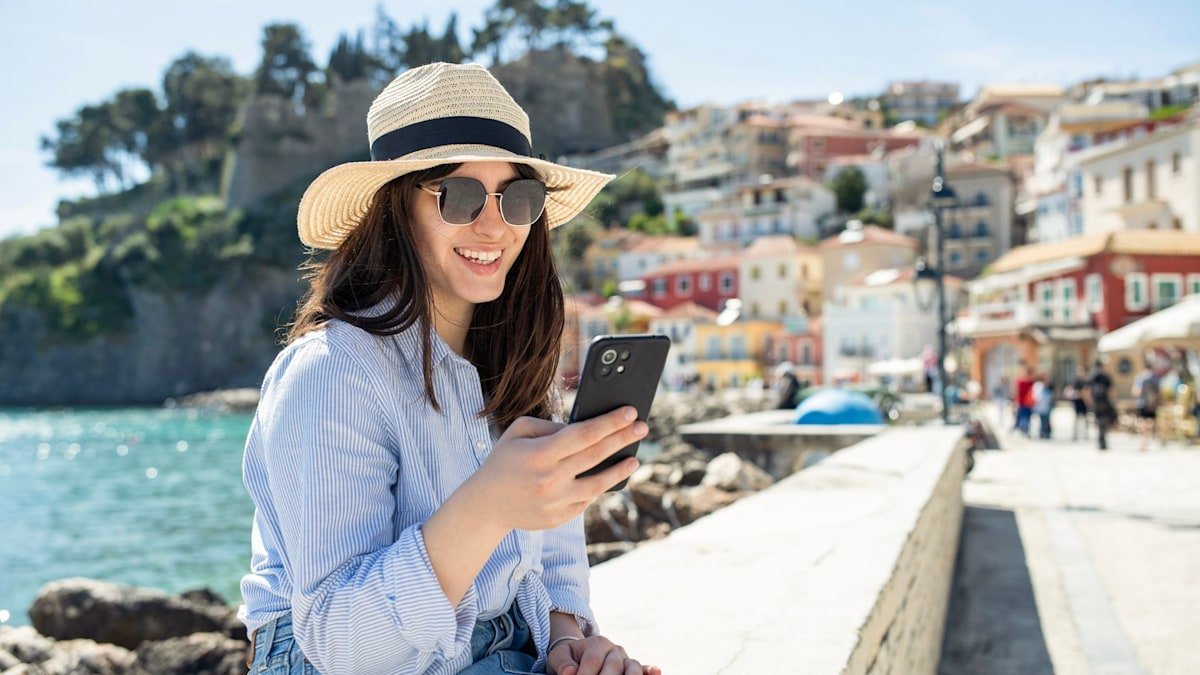Solo Travellers
Tracee Ellis Ross Champions the Joys of Solo Travel

August 3, 2025
Tracee Ellis Ross is redefining what it means to travel solo, using her new docuseries to showcase the power, freedom, and personal growth that come with exploring the world alone.
Actor and entrepreneur Tracee Ellis Ross is embracing life on her terms—and she’s encouraging others to do the same, especially when it comes to travel. In her new three-part docuseries, “Solo Traveling with Tracee Ellis Ross,” now streaming on the Roku Channel, Ross takes viewers along as she explores Morocco, Mexico, and Spain—alone. The series highlights not just scenic adventures but the personal growth and confidence that come from venturing solo.
Ross, known for her roles in “Black-ish” and “Girlfriends,” has long been unapologetically open about being single and child-free. For her, solo travel isn’t a second option—it’s a lifestyle.
“What I find is that I gain a muscle strength around being uncomfortable,” Ross told The Associated Press. “It’s like when a baseball player swings with two bats, and then by the time they get to the one bat, it feels lighter.”
She said her solo travel journey began in her 20s, and over time, it’s taught her coping skills that have extended into everyday life.
“When you get back into your regular day life and uncomfortable things happen, I have muscle memory to know how to walk through this on my own.”
Ross encourages others to ease into solo travel by starting with simple outings. “Start by going to dinner by yourself,” she said. “And if you feel nervous about doing that, go to dinner by yourself on a Tuesday night at 6 o’clock and work your way up to going to dinner by yourself on a Saturday or Friday night at 8 o’clock.”
She also stresses the importance of safety, especially for marginalized or vulnerable travelers. “You might not feel vulnerable, but depending on where you’re going, it might leave you vulnerable,” Ross explained.
“If you are a Black woman, if you are a woman, if you are LGBTQIA, if you are non-binary, if you are differently abled—that might leave you vulnerable in a foreign place.”
When it comes to destination planning, Ross is meticulous. She prefers staying at resorts for safety and ease and does thorough research beforehand—everything from airport layouts to climate expectations. “Knowing what to expect won’t just lead to feeling prepared and comfortable in general, but feeling prepared and comfortable by yourself,” she said.
In “Solo Traveling,” Ross proves that adventure, clarity, and empowerment can all be found in your own company, with the right mindset and a good plan, and fans of the show agree.
Social media users have praised Ross and the showrunners for how informative, well-produced, and relatable “Solo Traveling” really is.
One viewer tweeted, “Solo traveling with tracee ellis ross is such a great series to watch. It reminds you that you must go after your life and not wait on anyone. I love that because this is the season I’m in, allowing this new chapter to unfold & be gentle with myself. Do everything you LOVE!”
Another posted, “Watching the first episode of Solo Traveling with Tracee Ellis Ross and it’s making me feel emotional at how relatable it is. So resonant.”
RELATED CONTENT: The Stars of ‘Girlfriends’ Reunite In Commercial For Tracee Ellis Ross’ Pattern Beauty Line
Solo Travellers
Where tourists seldom tread, part 18: three seaside towns that defy the tides of fashion | United Kingdom holidays

Tis the season to be beside the seaside – and to hype and critique coastal towns in surveys and rankings. I suppose lists of this year’s “in” and “out” resorts help tourists decide where to go; no point going to Skegness for Michelin-starred food, or to Salcombe for a laugh and cheap beer. Less obvious coastal towns provide more nuanced fare. Perhaps the most alluring spots are those where we don’t forget the sea. These three towns are routinely ranked last resorts or else ignored altogether, but they offer more than stuff to eat, drink, buy and post on socials – and are close to swimmable beaches.
Ayr, Ayrshire
A century ago, Clyde steamers and the Glasgow and South Western Railway took thousands of sunseekers from inland towns to the Ayrshire coast. They came to escape the smoke and noise of industry, breathe in the briny air, and admire the Isle of Arran and tiny Ailsa Craig – from afar or up close on an excursion. The bed and breakfasts on elegant Park Circus (a sweeping crescent lined with cherry trees that blossom red on one side and white on the other) and the Georgian villas on Eglinton Terrace evoke something of the golden days of yore.
It’s easy to imagine parasol-sporting ladies and tall-hatted gents strolling across the Low Green, a large field between the town centre and the beach. This open space – perfect for picnics, kite-flying and impromptu games – and the absence of any clutter on the prom make the seafront unusually peaceful. It’s as if Ayr has refused to become a traditional resort. No tat, no tack, not many tourists. There are places to play on swings and get an ice-cream or a pint, but lovers of amusement arcades and bucket-and-spade shops should probably stay away. On the short block beside the Low Green the buildings are mainly residential – including care homes, that standard fixture of coastal towns.
The beach is a golden sweep about two miles in length, with the old harbour at the north end. Wharves and quays once bustled all along the River Ayr. By the 14th century, this was Scotland’s principal west coast port. In the 18th century, more than 300 ships were moored every year, unloading American tobacco, French wine, Spanish salt, English earthenware and slate from Easdale in the Firth of Lorn. Walk south and you come to the ruins of Greenan Castle, a 16th-century clifftop tower. The sunsets over Arran are life-enhancing. I watched a woman of retirement age do her tai chi moves while keeping her eyes fixed on the island – spiritually separate from the dog-walkers and prom-striders.
Robert Burns was born near Ayr and baptised in the Auld Kirk. In Tam o’ Shanter he writes: “Auld Ayr, wham ne’er a town surpasses, / For honest men and bonny lasses”. A lively pub on the high street, which is set back a good mile from the beach, is named after the poem; it claims to be the oldest in Ayr, but so does the Black Bull on the opposite side of the river. The old bridge (or Auld Brig, if you prefer, which inspired another Burns poem) that takes you across is pedestrianised and a beauty. All the old pubs are enticing but I had my most enjoyable, peaceful beer and dram in the Twa Dugs – also named for a Burns poem. In Ayr’s Waterstones, I found a long-overlooked 1969 Booker-nominated novel by Gordon M Williams, From Scenes Like These, that provided a brutally realistic riposte to Burns-esque takes on rural Scotland. I read it in the boozers, the caffs, on benches.
People in Ayr will tell you the town has declined. They’ll tell you that in nine out of 10 seaside resorts. But this column gets me around, and I can vouch for the town’s general busyness and good looks. Sedate, somewhat stern, bereft of traditional fun stuff, it’s an ideal hideaway for those who want to do beach walks, read or write, and check into small, friendly guest houses.
Things to see and do: Rozelle House Museum, Robert Burns Birthplace Museum, Culzean Castle and Country Park
Bangor, Gwynedd
Bangor, the oldest city in Wales, came second from bottom in the Which? 2025 rankings and absolute bottom in 2024. Perhaps the latter partly anticipated the former. Casually saddle a place with derision and it takes a great effort to shake it off.
As the gateway to the island of Ynys Môn (Anglesey), a university town and former royal capital, Bangor doesn’t need star ratings or hip amenities. The city’s origins stretch back to the founding of a monastery in the early sixth century. A cathedral was later built on the site. For centuries, Bangor was the spiritual and ecclesiastical hub for Gwynedd – a kingdom until the English came a-conquering – but remained a small settlement. Nonetheless, during the first flush of Welsh tourism, at the turn of the 18th and 19th centuries, pleasure steamers from Liverpool brought visitors to see the big church and the wild waters of the Menai Strait.
The boom years came after 1826 with the completion of the Holyhead Road, linking London with Dublin – hitched to the recently created UK by the 1800 Acts of Union. The first major civilian state-funded road building project in Britain since the Roman era, the job was given to Thomas Telford. The road (much of it on the same route as today’s A5) swept through central Bangor, making the former big village a major staging post, and creating the longest high street in Wales. To replace the ferry-shuttles, Telford’s magnificent Menai Suspension Bridge opened in 1826. Two decades later, Robert Stephenson built a tubular bridge to carry the Chester-Holyhead railway across the straits. With communications much improved, Bangor became a proper little port, with shipbuilding, sail making, iron founding, smithing and timber yards, as well as slate yards.
Walk to the natural end of this high street – which turns residential – and you come to the shore, a pier and a large park between neo-Norman Penrhyn Castle and the sea. You don’t have an in-town beach, which might be why some of the raters have a low opinion of Bangor. But the Wales Coast Path and the railway line link Bangor with beaches at Llanfairfechan and Penmaenmawr, eight and 10 miles away respectively. In fact, this might be the best-connected seaside town in the UK, with Eryri national park (Snowdonia), Unesco-listed Caernarfon Castle and Criccieth and the Llŷn peninsula accessible by bus, and of course Anglesey on the doorstep.
Things to see and do: walk the Menai Suspension Bridge, kayaking off Caernarfon, Aber Falls Distillery
Millom, Cumbria
The Cumbrian coast is the most intriguing stretch of littoral in these islands. Backed by the towering, cloud-drawing fells of the national park, the shore is often beneath a blue dome. The towns along it are chapters in British social history. Whitehaven is like a Devon port town without the crowds. Workington is a fascinating ex-industrial town. Nethertown is a hidden hamlet in a spectacular setting.
Millom, at the southern tip of the old county of Cumberland, is a stop on the coast-hugging railway line – a superlative train ride – between Barrow-in-Furness and Sellafield. Its main connection to the nexuses of nuclear war and power are the Millomites who commute south and north for work. Millom once had industry; hematite ore (iron oxide) was found at Hodbarrow in 1856 and mined till 1968, the population swelling to 10,000. Much of the land was transformed into an RSPB nature reserve, centred on the north-west’s largest coastal lagoon; little, common and sandwich terns breed on the islands and you can see ringed plovers, redshanks, great crested grebes and oystercatchers around the wetlands.
Millom is tiny, but has none of the jams and crowds of the villages in the nearby Lakes. The Camra-rated Bear on the Square has real ales, good food and live music. The town has its own fell – Black Combe – and while only a 600-metre Marilyn, its isolation and proximity to the sea make it feel higher. The views from the summit are magnificent – with Blackpool Tower and Scafell Pike visible in clear weather.
The poet Norman Nicholson (1914-1987) was born in Millom and spent almost all his life here, shunning metropolitan literary circles and asserting that the much-maligned “provincial” has more in common with people of other times and lands and consequently “may be all the more aware of that which is enduring in life and society”. The titles of his books reflect the locale: Rock Face (1948); The Shadow of Black Combe (1978); Sea to the West (1981). St George’s church has a stained-glass window designed by Christine Boyce that was inspired by Nicholson’s writing. His house is being restored, while Millom as a whole is undergoing a major rebuild with heritage and health projects afoot as well as a 7.5-mile walking and cycling trail.
For a swim, head to Silecroft by train (one stop) or on foot (3.5 miles); Haverigg beach, though closer, often has pollution warnings.
Things to see and do: Millom Heritage and Arts Centre, Swinside Stone Circle
Further information: Visit Scotland, Visit Cumbria and Visit Wales
Solo Travellers
Solo Travel Rises Among Singaporeans
Solo travel is becoming a lifestyle choice among travelers in Singapore, according to new research by Scoot, he low-cost subsidiary of Singapore Airlines. The study found that 79% of respondents from took multiple solo trips over the past year.
Motivations cited include freedom, flexibility, and personal growth, with 45% viewing solo travel as an opportunity for self-discovery and wellbeing.
Top destinations for solo travelers from Singapore include Japan, China, and Malaysia—highlighting preferences for vibrant cultures, nature escapes, and familiar comfort.
The survey was conducted by YouGov across five countries in the Asia-Pacific region, with over 5,000 respondents participating. It explored traveler demographics, motivations, planning behaviors, and cultural attitudes related to solo travel.
Solo Travel Emerges as Mainstream Travel Choice
Once seen as a niche pursuit, solo travel among travelers from Singapore has increasingly become a common lifestyle choice, particularly for younger travelers.
Almost 8 in 10 (79%) of the respondents from Singapore took multiple solo trips in the past year, and half among these travelers (49%) embarked on three or more solo trips in the past year. Millennials are at the forefront of this shift, making up 51% – and the largest cohort – of current and aspiring solo travelers, compared to 40% across APAC.
Solo vacations are highly recommended across the region by those who have embarked on such trips. In Singapore, 85% of respondents would recommend solo travel to others. This growing trend is closely tied to broader lifestyle shifts, from increased demands at work and home to a rising emphasis on personal well-being.
Across APAC, most respondents from Singapore cited solo travel as a catalyst for personal growth and self-discovery – 45%, compared to the regional average of 40%.
55% of solo travellers from Singapore cite freedom and flexibility to plan their own itineraries as their primary motivation, while 52% view solo travel as an opportunity to take a break and focus on themselves. Notably, 46% of the respondents value the independence of exploring new places at their own pace.
Across APAC, most respondents from Singapore cited solo travel as a catalyst for personal growth and self-discovery (45%, compared to the regional average of 40%). This inclination reflects recent behavioural trends within Singapore’s highly connected and fast-paced society.
Scoot’s findings dovetail the increased focus on mindfulness, health and wellness in recent years. The white paper highlights how travel, especially solo travel, has evolved from simply being a leisure activity to one that travellers growingly seek for reflection and self-discovery.
“While the findings do not represent the end to group and family travel, the way we travel expresses our individuality and allows for self-discovery. Scoot’s white paper sheds light on the behaviour, motivations, preferences and expectations of an emerging segment of travelers today,” said Agatha Yap, Director of Marketing, Communications & Loyalty, Scoot.
“With an extensive network especially in the Asia-Pacific, Scoot is excited to be able to play a role in enabling access to some of the most sought-after and yet-to-be discovered destinations, empowering more travelers, whether solo or group, to explore the world with greater confidence and enthusiasm,” she added.
Research and Planning are Key Priorities for Solo Travelers
Results revealed that solo travelers are highly intentional in their approach. An overwhelming majority (98%) shared that they engage in some form of planning for their trips.
Aside from flight bookings, the main priorities for more than half of these travelers include accommodation selection (57%), safety considerations (51%), and budget management (42%).
They rely heavily on online review platforms, hotel websites, and online travel agencies to help them make informed decisions about their flight and accommodation bookings. For food and activity recommendations, they rely on social media.
Japan, China, and Malaysia Top Travel Wishlist
The paper also reveals a strong preference for APAC destinations among respondents from Singapore, with 9 in 10 planning trips within the region in the next 12 months. Japan (25%), China (22%), and Malaysia (22%) are the top three travel destinations in the year ahead.
These choices indicate a desire for vibrant cultures, nature escapes, and familiar comfort, reflective of the most popular types of solo trips: city breaks (39%), shopping holidays (39%), cultural and historical experiences (35%), nature holidays (34%), and time for reconnecting with loved ones (32%).
Respondents from Singapore continue to prioritize affordable air travel options, with two-thirds (66%) opting for economy class and one in five (20%) choosing low-cost carriers.
To download the full white paper, visit here.
Solo Travellers
This little-known iPhone hack is a ‘game-changer’ for my solo trips

I’ll be the first to admit that I’m not a very ‘techy’ person.
So when I bought my new iPhone 16 a couple of months ago, I continued to use my device the way I have been doing so for years, despite it being quite the upgrade from my previous model.
A lot of the shiny new specifications and advanced features go over my head.
However, one thing I always ensure is a very obvious upgrade to my untrained eye is the camera.
Not only that, but I recently learned a new hack to do with the camera that will seriously upgrade my game the next time I take a trip abroad.
Particularly as I’m beginning to value solo travel more and more.
If, like me, you’re a newbie to stuff like this, here’s the hack you didn’t know you needed.
The camera hack I recently learned that will come in handy abroad
If you’ve ever wandered through the streets of a local town, gazing up at beautiful monuments and found yourself eager to know more, then the Apple Visual Intelligence is one for you to try. It essentially does the research for you.
By heading to ‘Settings’ and switching the intelligence on, your camera can then become something of a search engine in itself. Clever, right?
Once activated, you can use the Camera Control button (that curious new button on the lower right side of the device) to bring up the visual intelligence.
I gave it a go for myself and found it very easy to set up.
I then decided to put it to the test by pointing my camera towards a framed piece of art in my living room. A quick tap of the ‘search’ button that comes up instantly, and I was inundated with information on the Van Gogh painting on my wall.
While I, of course, already knew about said painting since it’s in my house, it was a quick and surefire way to test the feature out and prove that it really does work.
And given my next solo trip to Europe is as soon as next month, I’m already imagining being somewhere beautiful, such as an art museum or strolling down some cobbled streets, and finding this feature extremely handy.
Why it’s changed my travel game
Much like the instant search on the painting, this clever camera feature will undoubtedly be a fantastic tool when travelling, especially when taking a solo trip and perhaps relying on your device more than you would normally.
The tech company describes it as turning your device into a “personal travel guide, concierge, and translator all in one tap. It’s a true game-changer for modern explorers.”
Since the hack is so quick and easy enough for pretty much anyone to learn, it offers immediate convenience that wasn’t necessarily there before.
Users can simply switch on the camera and immediately identify landmarks, local businesses such as shops and restaurants, and also instantly translate on the spot without having to do a lengthy typing session into a search engine.
Imagine coming across a little café and wanting to see the menu translated before deciding to head in, or stumbling across a beautiful church or building with no obvious information for tourists, now help is on hand instantly.
-

 Brand Stories2 weeks ago
Brand Stories2 weeks agoBloom Hotels: A Modern Vision of Hospitality Redefining Travel
-

 Brand Stories2 weeks ago
Brand Stories2 weeks agoCheQin.ai sets a new standard for hotel booking with its AI capabilities: empowering travellers to bargain, choose the best, and book with clarity.
-

 Destinations & Things To Do3 weeks ago
Destinations & Things To Do3 weeks agoUntouched Destinations: Stunning Hidden Gems You Must Visit
-

 Destinations & Things To Do2 weeks ago
Destinations & Things To Do2 weeks agoThis Hidden Beach in India Glows at Night-But Only in One Secret Season
-

 AI in Travel3 weeks ago
AI in Travel3 weeks agoAI Travel Revolution: Must-Have Guide to the Best Experience
-

 Brand Stories1 month ago
Brand Stories1 month agoVoice AI Startup ElevenLabs Plans to Add Hubs Around the World
-

 Brand Stories4 weeks ago
Brand Stories4 weeks agoHow Elon Musk’s rogue Grok chatbot became a cautionary AI tale
-

 Brand Stories2 weeks ago
Brand Stories2 weeks agoContactless Hospitality: Why Remote Management Technology Is Key to Seamless Guest Experiences
-

 Asia Travel Pulse1 month ago
Asia Travel Pulse1 month agoLooking For Adventure In Asia? Here Are 7 Epic Destinations You Need To Experience At Least Once – Zee News
-

 AI in Travel1 month ago
AI in Travel1 month ago‘Will AI take my job?’ A trip to a Beijing fortune-telling bar to see what lies ahead | China













You must be logged in to post a comment Login